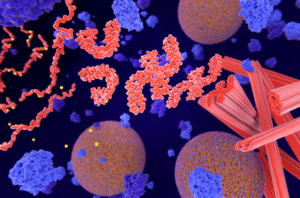Alzheimer’s disease is a devastating neurodegenerative disorder that affects millions of individuals worldwide. While research has made significant strides in understanding the underlying mechanisms of the disease, effective treatments remain elusive. However, a recent study published in Nature Medicine has uncovered a new genetic variant that appears to confer protection against Alzheimer’s disease. The study, conducted by an international team of researchers, provides valuable insights into the pathogenesis of Alzheimer’s disease, as well as different routes for therapeutic options that could shape diagnosis and treatment in the years to come.
Familial Predisposition for Alzheimer’s Disease
The new study centers on an individual patient from a well-known family when it comes to Alzheimer’s research literature: an extended family from Colombia who represent the largest known kindred carrier of the Paisa mutation (Presenilin-1 E280A), a genetic mutation that leads to early-onset Alzheimer’s disease. People with this mutation begin to show cognitive decline at a young age, with many exhibiting hallmark memory loss beginning at age 40. Carrying this particular mutation, as so many in this family do, all but guarantees early-onset dementia.
Protective Genetic Variant
Scientists have been studying this family for three decades. And in 2019, researchers found an anomaly: a woman in the family who carried the Paisa mutation but who nonetheless remained cognitively sharp until her early 70s. With further study, researchers learned that this was because while she carried the rare Paisa genetic mutation that caused Alzheimer’s, she also carried another extremely rare genetic mutation that protected her from the effects of the first mutation.
In their new study, researchers identified another member of that same family, a male carrier of the Paisa mutation who remained cognitively intact until age 67. They noted that “he progressed to mild dementia at age 72 and died at 74 — decades after most people with the Paisa mutation typically do.” Importantly, the researchers observed that the variant that protected this patient from early-onset symptoms was expressed on a different gene than the one observed in the 2019 study.
Another Protection Against Alzheimer’s
Led by a team of investigators at MGH and Mass Eye and Ear, research for the current case study of the male carrier described above spanned labs across the globe. It began with clinical assessments at the University of Antioquia in Colombia and expanded to genetic and molecular studies at Mass Eye and Ear and Children’s Hospital Los Angeles, neuroimaging and biomarker studies at MGH, and neuropathological studies at University Medical Center Hamburg-Eppendorf in Germany.
Upon concluding their studies, the international team of researchers had a significant finding to report: a new genetic variant, known as the Reelin-COLBOS variant, protects against AD. Unlike the variant found in the 2019 case, the Reelin-COLBOS variant operates by influencing the phosphorylation of tau protein, a critical contributor to the formation of pathological tangles in Alzheimer’s brains. By modulating this pathway, the Reelin-COLBOS variant offers protection against cognitive decline and Alzheimer’s symptoms.
A Cause and a Cure
It’s difficult to overstate the importance of the team’s findings for AD diagnosis and treatment.
Francisco Lopera, MD, is the neurologist who discovered this family and has been following them for the last 30 years. He is also a co-first author of the new study, and had this to say about the importance of its findings: “What we have done with the study of these two protected cases is to read mother nature. The most exciting thing is that nature has revealed to us both the cause of Alzheimer’s and the cure for it.”
As co-senior author Yakeel T. Quiroz, PhD, put it, “The insights we are gaining from this second case may guide us on where in the brain we need to look to delay and stop disease progression and will help us form new hypotheses about the series of steps that may actually lead to Alzheimer’s dementia.”
Guiding Future Solutions
Traditional Alzheimer’s treatments have primarily focused on reducing amyloid plaque buildup in the brain. But findings from this study indicate that even individuals with high levels of amyloid plaques can be protected from cognitive decline. By unraveling the mechanisms underlying the protective Reelin-COLBOS variant, researchers can explore therapeutic strategies that mimic its effects.
Lopera reiterates that ongoing research will look to imitate the natural protection provided by this newly observed mutation in therapeutics: “Mother nature did an exceptional experiment with these two subjects,” he said, referring to the woman at the center of 2019’s study, and the man at the center of the newly published 2023 study. “It endowed them both with a gene that causes Alzheimer’s and at the same time with another gene that protected them from the symptoms of the disease for more than two decades. Therefore, the solution is to imitate nature by developing therapies that mimic the mechanism of protection of these genetic variants in subjects at risk of suffering from the disease.”
Scantox is a part of Scantox, a GLP/GCP-compliant contract research organization (CRO) delivering the highest grade of Discovery, Regulatory Toxicology and CMC/Analytical services since 1977. Scantox focuses on preclinical studies related to central nervous system (CNS) diseases, rare diseases, and mental disorders. With highly predictive disease models available on site and unparalleled preclinical experience, Scantox can handle most CNS drug development needs for biopharmaceutical companies of all sizes. For more information about Scantox, visit www.scantox.com.










